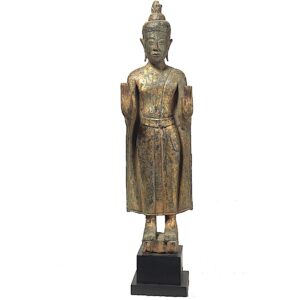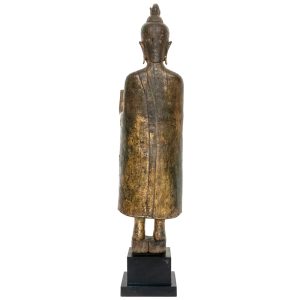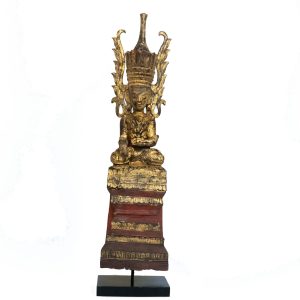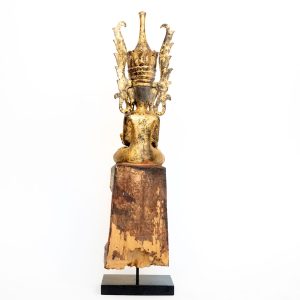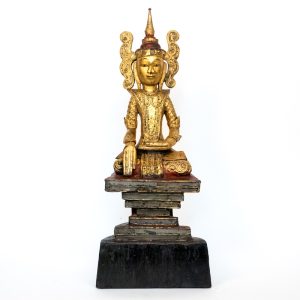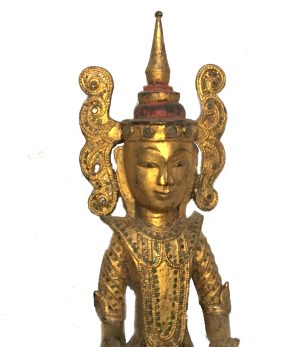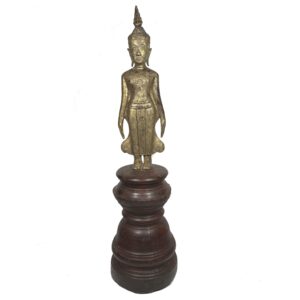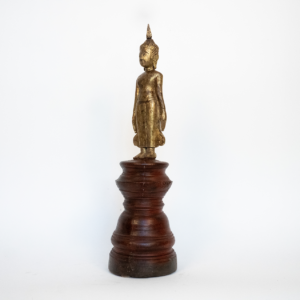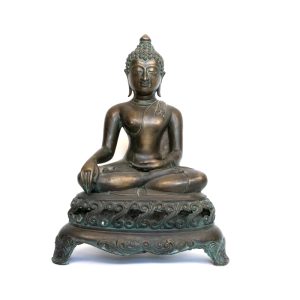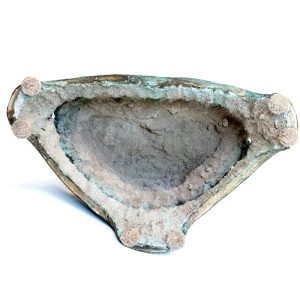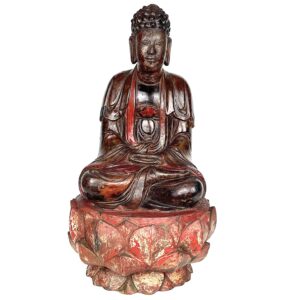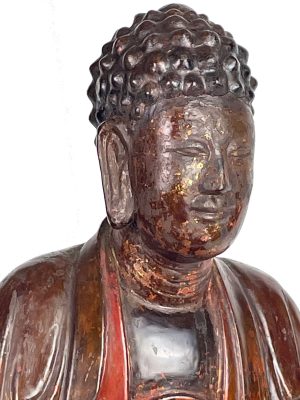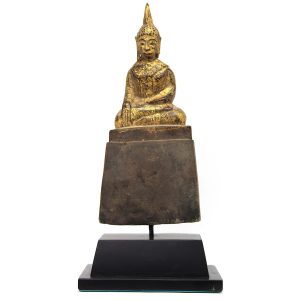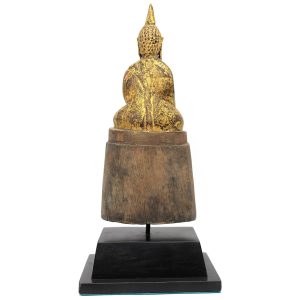-
Sale!


$1,475.00 Original price was: $1,475.00.$1,195.00Current price is: $1,195.00.
H: 20″ W: 3.75 D: 3.75″ | CALL 213-568-3030 OR EMAIL [email protected] FOR SHIPPING.
Rare antique, wood Theravada Lao Buddha in abhaya mudra symbolizing reassurance, divine protection, and dispelling fear. Gilt paint reflects his golden skin.
-
Sale!


$2,350.00 Original price was: $2,350.00.$1,950.00Current price is: $1,950.00.
H:26″ W: 10″ D: 5″| CALL 213-568-3030 OR EMAIL [email protected] FOR SHIPPING.
Rare, gilt covered Jambupati Buddha in Earth Witnessing position on high multi-tiered throne. Court attire, luxuriant jewelry and decorative flanges on faceted crown topped by long ushnisha. Strength and smile emphasize his spiritual and material power.
-
Sale!


$2,575.00 Original price was: $2,575.00.$2,100.00Current price is: $2,100.00.
H: 25.5” W: 9.75” D: 5” | CALL 213-568-3030 FOR SHIPPING quote or email [email protected]
Lavish Jambupati Buddha in Earth Witnessing mudra, in lavish gilt court attire, elaborate crown with butterfly flanges and his kingly garment “bejeweled” with multi- colored cut glass insets.
-


$1,575.00
H: 24.5” Dia: 7″ | CALL 213-568-3030 FOR SHIPPING quote or email [email protected]
Lao carved Buddha statues are renowned for their delicacy and refinement. This elegant antique Buddha is depicted in the “Calling for Rain” mudra found only in Laos with his half-closed gazing downward in meditation, elegant gestures, lyrical flaring robes and graceful curves of the body reflecting the Buddha’s gentleness. The curvature, proportions and oversized head indicate the perfection, wisdom and compassion of the “Enlightened One. He stands on a multi-tiered circular and waisted base. Carved Laotian images as old and elegant as this are rare.
-
Sale!


$395.00 Original price was: $395.00.$295.00Current price is: $295.00.
H: 21” W: 15.5 ” D: 9.5” | CALL 213-568-3030 FOR SHIPPING
Thai bronze Lopburi style Buddha in Earth Witnessing position on decorative pierced throne on 3 footed curved base wearing simple 2-part Theravada Buddhist monk’s robe showing his modest religious devotion. Heavy statue filled with cement binder.
-
Sale!


$3,750.00 Original price was: $3,750.00.$2,985.00Current price is: $2,985.00.
H:18.75“ W: 9.75″ D: 9″ | CALL 213-568-3030 OR EMAIL [email protected] FOR SHIPPING.
Magnificent rare Ming Buddha covered with dark lacquer, indications of gold and red pigmentation. Seated in meditation on an elaborate lotus throne, this rare masterpiece would enhance any environment with its spiritual energy and beauty.
-


$295.00
H: 9” W: 4.25 D: 3.125” | FREE SHIPPING
This mid 20th century Buddha Shakyamuni in Earth Witnessing position is carved in rural Lao style. Covered with gilt, the small rustic and simply carved image follows Lao artistic canons for depicting a Buddha: a curved hairline and high arched eyebrows that meet at the bridge of the nose, distinct hair curls, long ears, and a flame-shaped radiance emerging from his ushnisha. Its very large base is as tall and wide as the image, reflecting Laotian beliefs that a high pedestal reflects a deep respect for the Buddha. A base has been added for display purposes. Authentic old Lao images, even small personal ones like this, are difficult to find.
End of content
End of content

